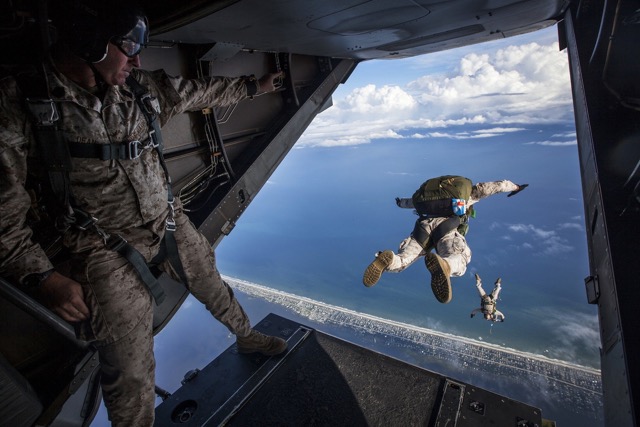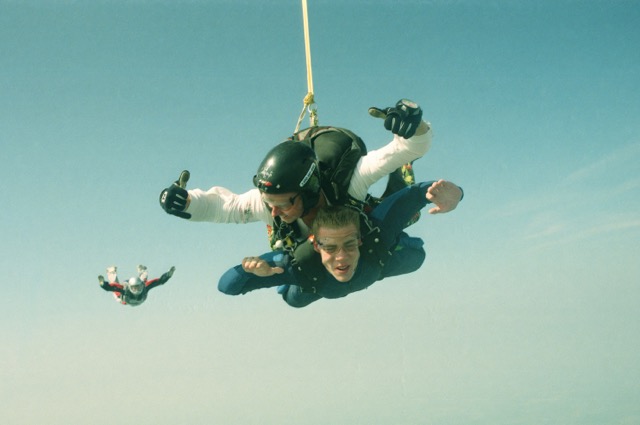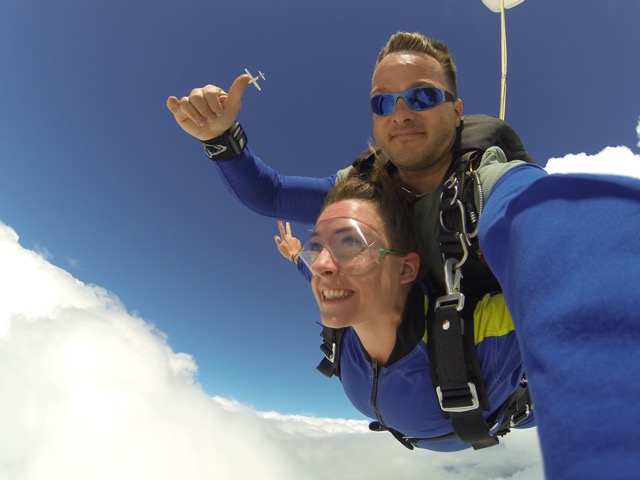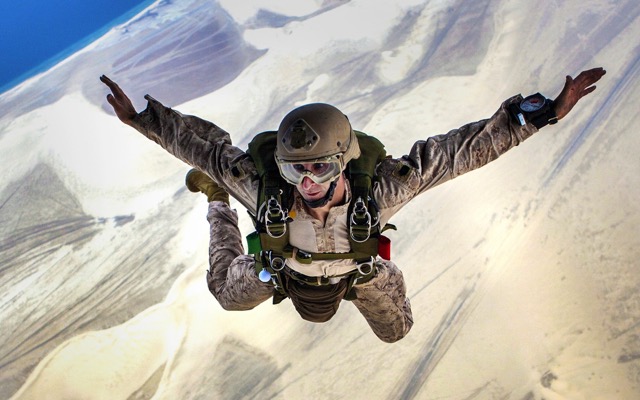If you’ve ever wondered how high skydivers jump from, or if it’s possible to skydive from 5000 feet, you’ve come to the right place. We’ll explore the different altitudes skydivers typically jump from, including the possibility of a 5000 feet jump. Additionally, we’ll discuss the time it takes for a 10,000 feet skydive and address the safety concerns associated with jumping from this altitude. So, buckle up and get ready to delve into the thrilling world of skydiving altitudes!
Introduction

Skydiving is an exhilarating experience that many adventurous individuals crave. But have you ever wondered how high you actually skydive from? We will explore the different altitudes at which people typically skydive and what factors can influence the height of a skydive.
When it comes to skydiving, the altitude at which you jump can vary depending on a few factors. The most common altitude for a skydive is around 10,000 to 13,000 feet. At this height, you are approximately two miles above the ground, giving you plenty of time to enjoy the breathtaking views and rush of adrenaline.
For those looking for a more extreme skydiving experience, there are options to jump from even higher altitudes. Some skydiving centers offer dives from 15,000 feet or higher. These high-altitude jumps provide an even longer freefall and more time to experience the rush of skydiving.
- Weather conditions: Skydiving centers always prioritize safety, and adverse weather conditions can affect the maximum altitude at which you can jump. Wind speeds, cloud cover, and visibility are all factors that can determine if a skydive can take place and at what height.
- Experience level: Beginners usually start with lower-altitude jumps, around 10,000 feet, to ease into the sport and gain confidence. As you become more experienced and comfortable with the techniques and equipment, you may choose to take on higher-altitude jumps.
- Specialty jumps: There are also specialty jumps, such as HALO (High Altitude Low Opening) jumps, where skydivers jump from extremely high altitudes, sometimes exceeding 30,000 feet. These jumps are typically reserved for experienced skydivers and require specialized training and equipment.
The height at which you skydive from depends on various factors, including weather conditions, experience level, and the type of jump you desire. Whether you opt for a standard jump from 10,000 feet or challenge yourself with a higher-altitude dive, the experience of soaring through the sky and defying gravity is sure to be unforgettable.
Can You Skydive From 5000 Feet?

Are you an adrenaline junkie looking for your next thrilling adventure? Skydiving might just be the perfect activity for you! If you’re new to the world of skydiving, you may be wondering about the different altitudes people jump from. One common question that arises is, can you skydive from 5000 feet? Let’s explore this topic and find out!
Skydiving is an extreme sport that involves jumping out of an aircraft and freefalling through the sky before deploying a parachute to land safely on the ground. The altitude at which skydivers jump can vary depending on several factors, including the individual’s experience level, the type of jump, and the location. While most tandem skydives, where a novice skydiver is attached to an experienced instructor, typically take place from around 10,000 to 13,500 feet, it’s possible to skydive from lower altitudes such as 5,000 feet.
When skydiving from 5,000 feet, the overall experience will differ from higher altitude jumps. Firstly, the duration of the freefall is significantly shorter. Typically, a skydiver jumps from 5,000 feet for fun jumps or as part of a training exercise. Since the freefall time is reduced compared to higher altitude jumps, the overall thrill may be slightly diminished. Nevertheless, it can still provide an exhilarating experience for those seeking a taste of skydiving without committing to the higher altitudes.
How Long Does a 10,000 Feet Skydive Take?

A skydive from 10,000 feet is a thrilling and adrenaline-pumping experience. It offers a perfect balance between the intensity of freefall and the exhilaration of a longer canopy ride. But one question that often comes to mind is how long does a skydive from 10,000 feet actually take?
The duration of a 10,000 feet skydive can vary depending on several factors. First and foremost, it depends on the type of aircraft used to climb to the desired altitude. Typically, it takes around 15 to 20 minutes for the plane to ascend to 10,000 feet.
Once you have reached the desired altitude, it’s time for the adrenaline-fueled freefall. The freefall phase of a skydive from 10,000 feet typically lasts around 30 to 40 seconds. During this exhilarating moment, you’ll experience speeds of up to 120 miles per hour as you descend towards the earth at an incredible rate.
- The speed and duration of the freefall also depend on your body position during the descent. A more streamlined position can increase your speed, while a relaxed and spread-eagle position can slow it down slightly.
- Another factor that can affect the duration of the freefall is your weight. Heavier individuals tend to fall faster due to their increased mass.
Once the freefall phase is over, it’s time to deploy the parachute and enjoy a peaceful canopy ride. The canopy ride can last anywhere from 4 to 8 minutes, allowing you to catch your breath and take in the breathtaking views from above.
- Keep in mind that these time estimates are approximate and can vary from one skydiving center to another.
- Weather conditions, air density, and other external factors may also affect the duration of a skydive from 10,000 feet.
Is It Safe to Skydive From 10,000 Feet?

Skydiving is a thrilling and adrenaline-pumping activity that involves jumping out of an aircraft and freefalling through the sky before deploying a parachute to slow down and safely land on the ground. It is an extreme sport that comes with inherent risks, but with proper training, equipment, and safety precautions, skydiving can be a relatively safe adventure. However, many people may wonder, is it safe to skydive from 10,000 feet? We will explore the safety measures and considerations involved in skydiving from this altitude.
Before delving into the safety aspects of skydiving from 10,000 feet, it is important to understand the altitude itself. 10,000 feet is the typical exit altitude for many skydiving jumps. At this height, the air is thin, and the freefall lasts for approximately 30 to 40 seconds before the parachute is deployed. The duration of the freefall and the time it takes to reach the ground are determined by factors like body position, wind conditions, and the type of parachute used.
When it comes to the safety of skydiving from 10,000 feet, it is crucial to consider several factors. First and foremost, proper training and instruction are essential. Before attempting a solo skydive from this altitude, individuals must undergo a comprehensive training program that includes theory lessons, practical exercises, and simulated jumps. This training ensures that skydivers understand the equipment, techniques, and safety procedures involved.

- Safety equipment is another crucial element in skydiving from 10,000 feet. Skydivers must wear a well-maintained and properly fitted harness, which connects them securely to the parachute system. The parachute system itself includes a main parachute and a reserve parachute as a backup, providing an added layer of safety in case of any malfunctions. Regular inspections and maintenance of these equipment are of utmost importance.
- Furthermore, skydiving operators and drop zones must adhere to strict safety regulations and guidelines set by the relevant aviation authorities. These regulations cover aspects such as aircraft maintenance, pilot qualifications, parachute packing, and operational procedures. Choosing a reputable and licensed skydiving facility is crucial for ensuring safety while skydiving from 10,000 feet.
- Weather conditions play a significant role in skydiving safety. Wind speed, direction, and stability are important factors that can affect the entire jump. Skydiving operations have specific weather limits to ensure safe operations. Experienced instructors and skydiving professionals closely monitor weather forecasts and conditions to make informed decisions regarding the feasibility and safety of skydiving from 10,000 feet.
In conclusion, while skydiving from 10,000 feet may seem daunting, it can be a safe and exhilarating experience with the right precautions. Proper training, well-maintained equipment, adherence to safety regulations, and consideration of weather conditions are essential factors that contribute to the safety of skydiving from this altitude. By choosing a licensed skydiving facility, following the guidance of experienced instructors, and ensuring the equipment’s integrity, you can enjoy the thrill of skydiving while minimizing the associated risks.




